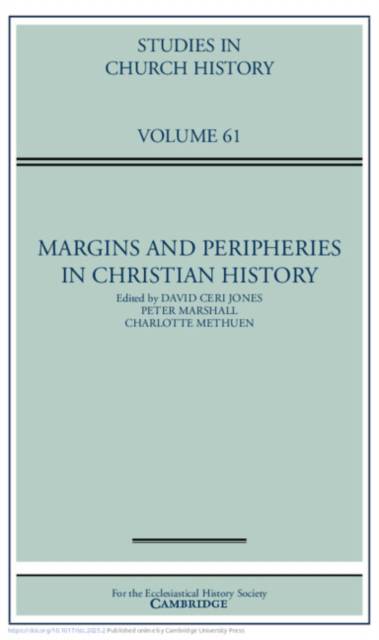
- Afhalen na 1 uur in een winkel met voorraad
- Gratis thuislevering in België vanaf € 30
- Ruim aanbod met 7 miljoen producten
- Afhalen na 1 uur in een winkel met voorraad
- Gratis thuislevering in België vanaf € 30
- Ruim aanbod met 7 miljoen producten
Zoeken
Margins and Peripheries in Christian History: Volume 61
€ 87,95
+ 175 punten
Omschrijving
Studies in Church History 61 takes as its theme Margins and Peripheries in Christian History. For most of its existence, Christianity - a religion born on the eastern edge of the Roman Empire - has been influenced by its margins and peripheries. In the history of Christianity, as in other contexts, margins and peripheries are paradoxical concepts. To label something or somewhere as 'marginal' or 'peripheral' is to declare it to be of lesser significance or importance. Yet for Christian churches of differing complexions, supposed margins and peripheries have often been sources of experiment, innovation and renewal; places where essential traditions have been preserved; locations of encounter, conversion and resistance; and sites where meaning and worth are negotiated and defined. The volume's articles offer a fresh look at Christianity's past by considering it in relation to, and from the perspective of, a variety of aspects that have been considered marginal or peripheral.
Specificaties
Betrokkenen
- Uitgeverij:
Inhoud
- Aantal bladzijden:
- 664
- Taal:
- Engels
- Reeks:
Eigenschappen
- Productcode (EAN):
- 9781009679404
- Verschijningsdatum:
- 16/10/2025
- Uitvoering:
- Hardcover
- Formaat:
- Genaaid
- Afmetingen:
- 137 mm x 206 mm
- Gewicht:
- 884 g

Alleen bij Standaard Boekhandel
+ 175 punten op je klantenkaart van Standaard Boekhandel
Beoordelingen
We publiceren alleen reviews die voldoen aan de voorwaarden voor reviews. Bekijk onze voorwaarden voor reviews.







